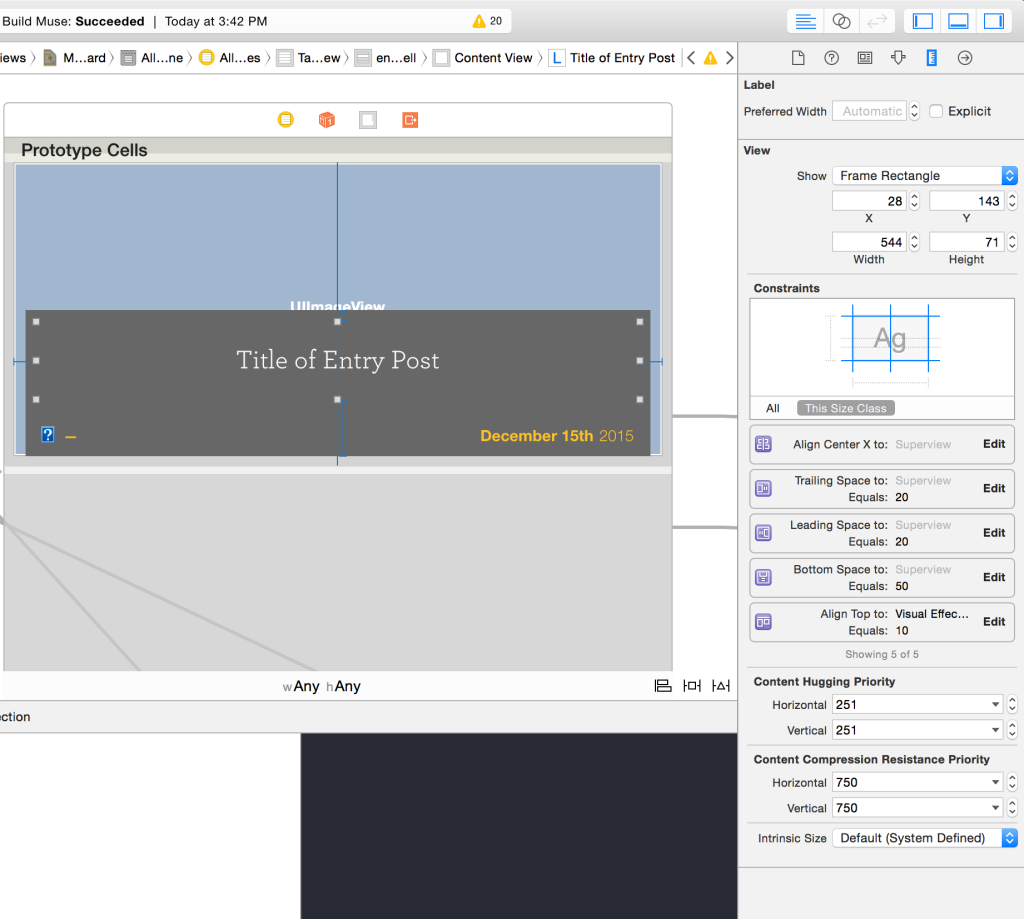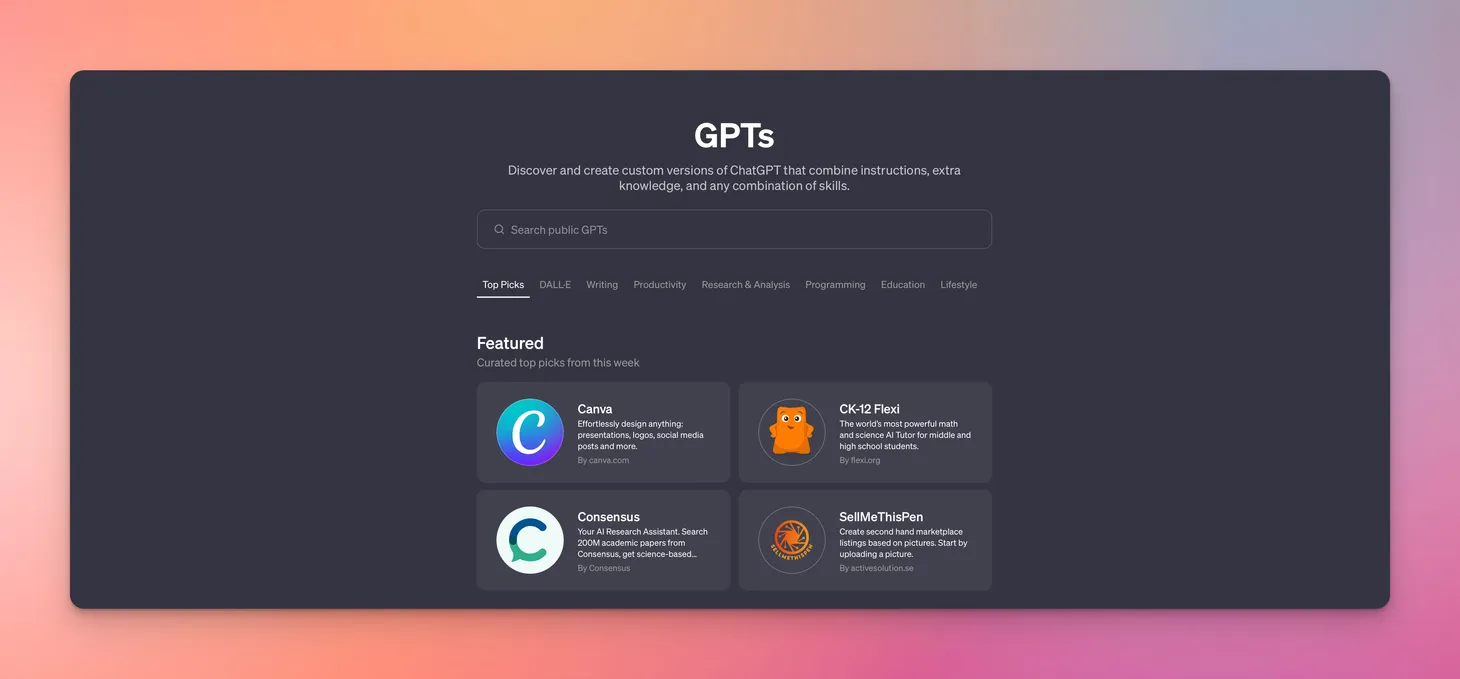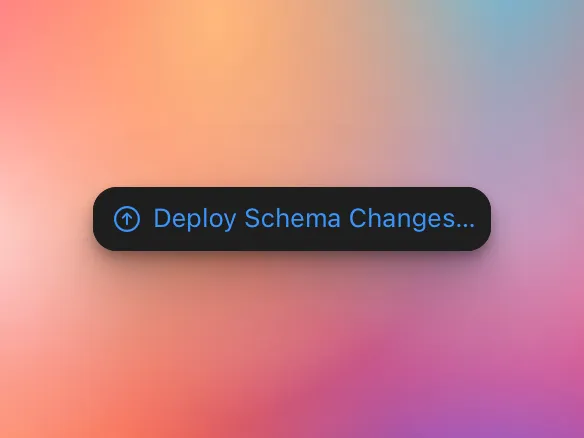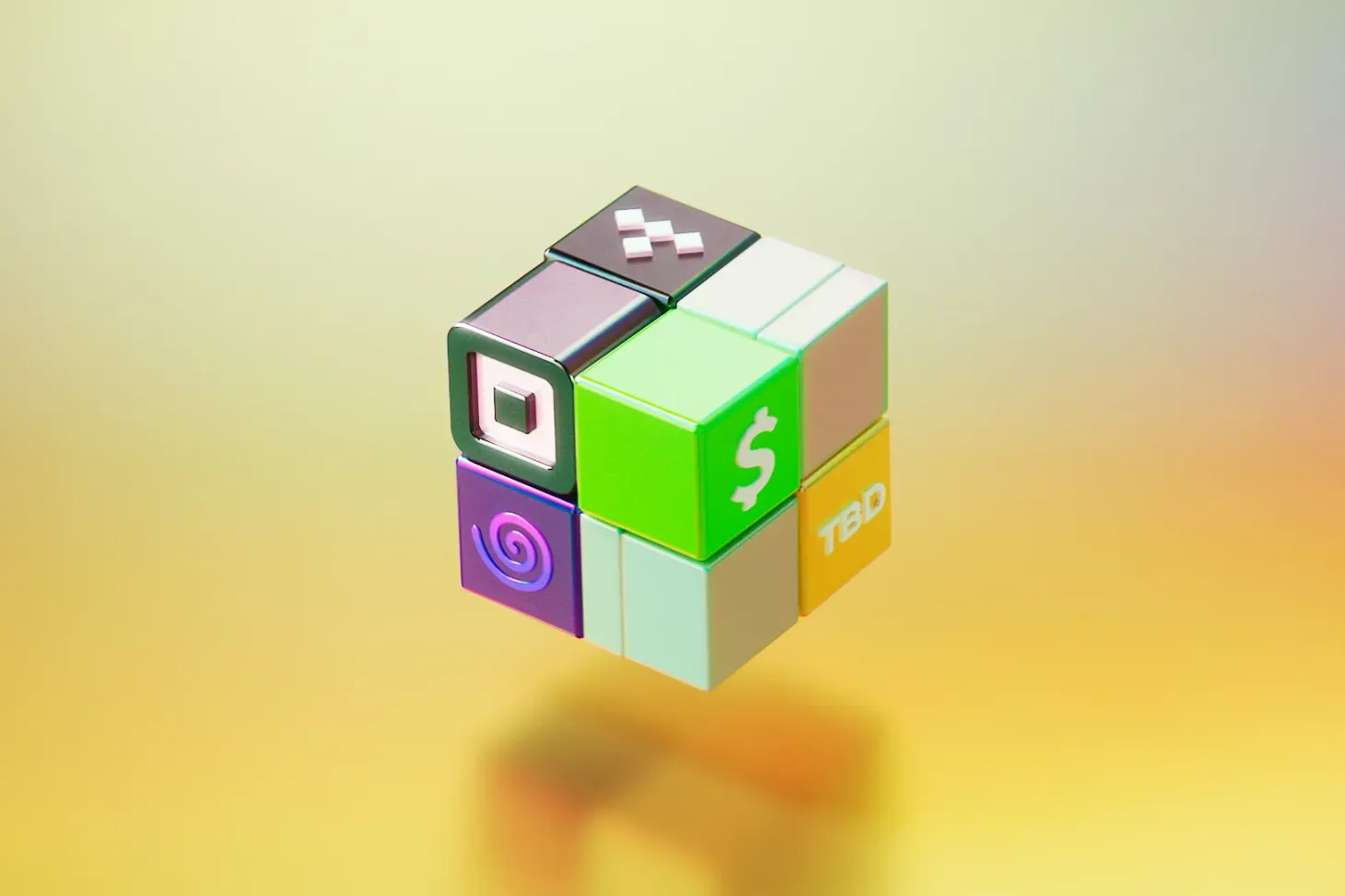Weeks 5 & 6 at The Flatiron School.

Table of Contents
Week 5
Auto Layout
Wrapping Up Core Data
We wrapped up our last lecture on core data this morning, and even though the everything dealing with core data seemed convoluted, it eventually became pretty straightforward. According to our main instructor Tim, we primarily use APIs and cloud services to manage our services. There is also Parse, a backend database solution for mobile app developers who don’t can’t/don’t want to deal with the backend side of things. On top of that, they recently came out with a new local database feature for iOS, meaning you can save data locally until you have a network connection, which then syncs your files with Parse’s server. Makes you think when we’d ever have the need for Core Data.
Auto Layout
We are learning how to apply rules and constraints in our frames the hard way first. Finished a lab that incorporated this mundane way of adding constraints. You had to add constraints to each side an object in relation to the said object’s nearest border. It was tough but no complaints. We need to understand the tried and past methods to appreciate what we often take for granted now.
Moronic Mondays
Now, we don’t always pick things up on the first shot— and often times, the concepts we forget or still have yet to grasp might be embarrassingly simple. The instructors are kindly aware of that and subsequently, we have this segment every Monday morning called “Moronic Mondays”, where we read anonymously submitted questions about anything and quickly answer them.
Pace
We are learning how to apply rules and constraints in our frames the hard way first. Finished a lab that incorporated this mundane way of adding constraints. You had to add constraints to each side an object in relation to the said object’s nearest border. It was tough but no complaints. We need to understand the tried and past methods to appreciate what we often take for granted now.
The pace of our class is beginning to accelerate past what our curriculum is currently on. And it’s no surprise.We have students that come from all walks of life, and it’s natural to gravitate towards what you are passionate about and connect your interests with iOS development. In addition, the ‘Flatiron Presents’ presentations add on to the pressure of delivering something fresh and exciting for our classmates and instructors. It’s beginning to get a little out of hand, and our main instructor had to remind us of the main reason we are here at The Flatiron School— and that is how to code as a professional prepared for almost task while applying best practices.
Yes, we all have high and distinct ambitions to make our personal projects and ideas a reality— and that’s why we got accepted in the first place; we all demonstrated a relentless drive to make ideas real. But the fact of the matter is, we can’t create anything near production grade application if we lack the necessary skill set that competent iOS developer possess. I think our ambitions and personal projects can fire us up anytime- anywhere; when we are truly inspired by something, our inclinations will make us work. But regarding core foundation of object oriented programming and objective-c best practices, it’s something that we, as iOS engineers, simply cannot avoid- and I think part of what we pay for these coding camps is the supervision of instructor to ensure that we learn the right— and often times, mundane things.
Despite these reservations to avoid doing whatever you please, I look forward to when I am competent enough to create a production grade app with other.
Basic Animations
Our main lecture today was about basic animations. You know, the very thing that draw the millions of users to download the programs we make daily? Anytime you see an object zoom, ease, bounce in, out or around your iPhone screen— yeah those are animations. Of course, for high level graphical games, developers use other tools such as SpriteKit or Quartz Core, but that’s way out of our class’s scope of content.
Standups
Last week, Tim announced that starting every Friday from here on out, we’ll only have lecture once in the morning and afterwards, we are free to work on whatever we want. The instructors want to introduce the idea of standup meetings, where at the end of the day, each student will quickly speak to an instructor about what progress we made that afternoon. Since tomorrow is Fourth of July observation and lecture is cancelled, we began the standup today.
It’s hard to imagine how I now can sit in front of a computer for 14 straight hours, but it happens. As the summer days fly by, the pressure in coding quality begins to escalate because we’re improving at such a fast rate.
Brohort
There was one point where making blackjack games seemed exhilarating solely for the reason that we made it. But as you can imagine, our desire to make full-fledged apps is becoming more and more apparent every week. The guys in our class really push each other to work at our best. When I say guys, every student in our cohort is male—yeah. There were apparently 3-4 girls in our original roster, but for some reason, the female count dwindled to zero after a couple drops, deferrals, and medical conditions. It has to be a coincidence because both Ruby cohorts have a significant ratio of women.
Anyway, That’s it for Week 5. We ended it with the closing of Core Data, the introduction of Animations, and the long-winded series of auto layout’s evolution in iOS Development.
Week 6
More Animations and Gestures
Gestures in iOS are the forgotten features that define what the iPhone is. We all know the standard gestures like panning, scrolling tapping, and swiping, but as of iOS 7, new gestures like edge swipe add so much more functionality to iPhone Development.
Blocks and the Internet
Blocks are the biggest challenge we will face this course. It doesn’t look easy but I can do it. My focus is somewhat thrown off because I'm next to go for Flatiron Presents; I feel pretty satisfied with how my app project turned out after three weeks ago, and I'm excited to show it to others.
Working with API calls and HTTP requests through the implementation of blocks is by far the most challenging obstacle I’ve had to face here at Flatiron. So many weird things can happen, and you never know if it’s your fault or not. Even our main instructor Tim will occasionally run into problems during lecture, though it’s still pretty epic watching a person who is so well versed in iOS programming debug and just Google things. As silly as it sounds, it is a powerful skill, when you see it, you’ll believe it.
Improvisation
We had an improvisation class today and it was surprisingly really fun and meaningful for personal development. The Flatiron School plans workshops for us every week and I would have never expected that improvisation would be the most helpful. To be fair, the quality of workshops is really dependent on its instructor, and Andrew, our improv mentor, was fantastic.
Andrew took us through a series of seemingly non-related social exercises, which eventually tied back to interpersonal skills and values we often forget- like listening. Andrew also claimed that he was an introverted nerd deep down, but he sure didn’t act like it. He spoke with confidence and true sincerity, almost like he was once in our shoes– budding programmers who possessed more computable skills than interpersonal.
Something I personally need to be more aware of is conversational empathy —that is, the ability to fully listen to what someone is saying, allowing them to finish his or her thought before considering my response. Seems like the obvious thing to do, but often times, I catch myself rehearsing a set of responses and sentences carved from previous conversations. That sounds like a robot... I don't want to be a robot.
Finishing Muse
Halftime. Week 7 is coming and it’s about to come full force more views, specifically scroll views. I am almost done preparing for my Flatiron Presents presentation. I just need to create the slides and refactor my spaghetti code so I myself can actually understand what the hell I wrote.
On to Week 7.


